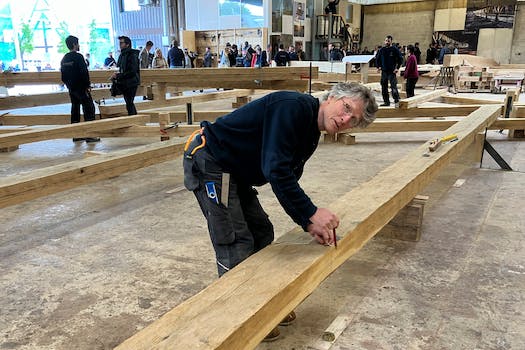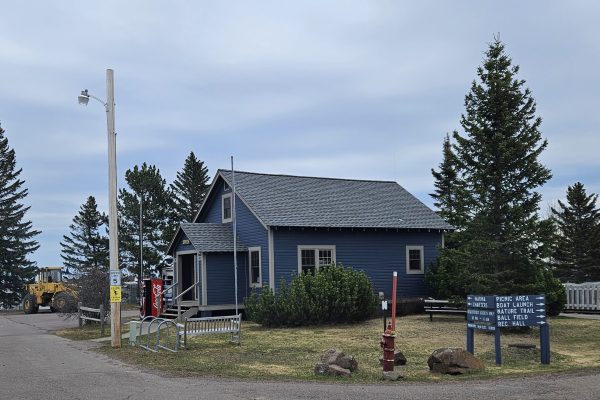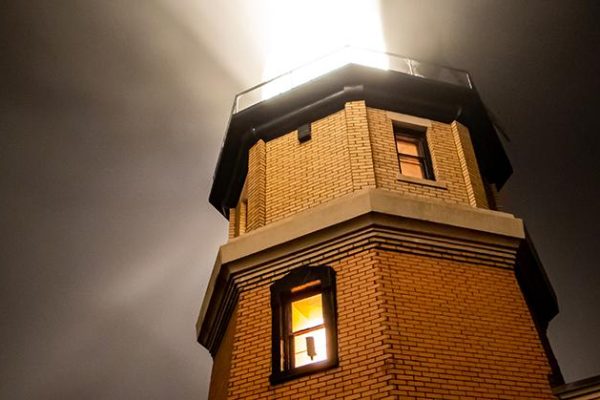North House instructor, Grand Marais carpenter helps rebuild Notre Dame’s fire-ravaged roof
If time travel was possible, medieval carpenters would surely be amazed to see how woodworking techniques they pioneered in building Notre Dame Cathedral more than 800 years ago are being used again today to rebuild the world-famous monument’s fire-ravaged roof.
Certainly the reverse is true for the modern-day carpenters using medieval-era skills. Working with hand axes to fashion hundreds of tons of oak beams for the framework of Notre Dame’s new roof has, for them, been like rewinding time. It’s given them a new appreciation of their predecessors’ handiwork that pushed the architectural envelope back in the 13th century.
“It’s a little mind-bending sometimes,” says Peter Henrikson, a Grand Marais resident and one of the carpenters. He says there are times when he’s whacking mallet on chisel that he finds himself thinking about medieval counterparts who were cutting “basically the same joint 900 years ago.”
“It’s fascinating,” he says. “We probably are in some ways thinking the same things.”
Facing a tight deadline to reopen the cathedral by December 2024, carpenters and architects are also using computer design and other modern technologies to speed the reconstruction. Computers were used in the drawing of detailed plans for carpenters, to help ensure that their hand-chiseled beams fit together perfectly.
“Traditional carpenters had a lot of that in their head,” Henrikson notes. It’s “pretty amazing to think about how they did this with what they had, the tools and technology that they had at the time.”
The 61-year-old traveled from Grand Marais for the project. The bulk of the other artisans working on the timber frame are French.
Henrikson is a well-known carpenter in Cook County. He has taught the timber-framing course at North House Folk School in Grand Marais for many years.
The roof reconstruction hit an important milestone in May, when large parts of the new timber frame were assembled and erected at a workshop in the Loire Valley, in western France.
The dry run assured architects that the frame is fit for purpose. The next time it is put together will be atop the cathedral. Unlike in medieval times, it will be trucked into Paris and lifted by mechanical crane into position. Some 1,200 trees have been felled for the work. Click here to read the full story by the Associated Press.
WTIP will be speaking with Henrikson this week about his experiences at Notre Dame Cathedral. Check back for updates and the full interview.
WTIP’s Joe Friedrichs contributed to this report.














